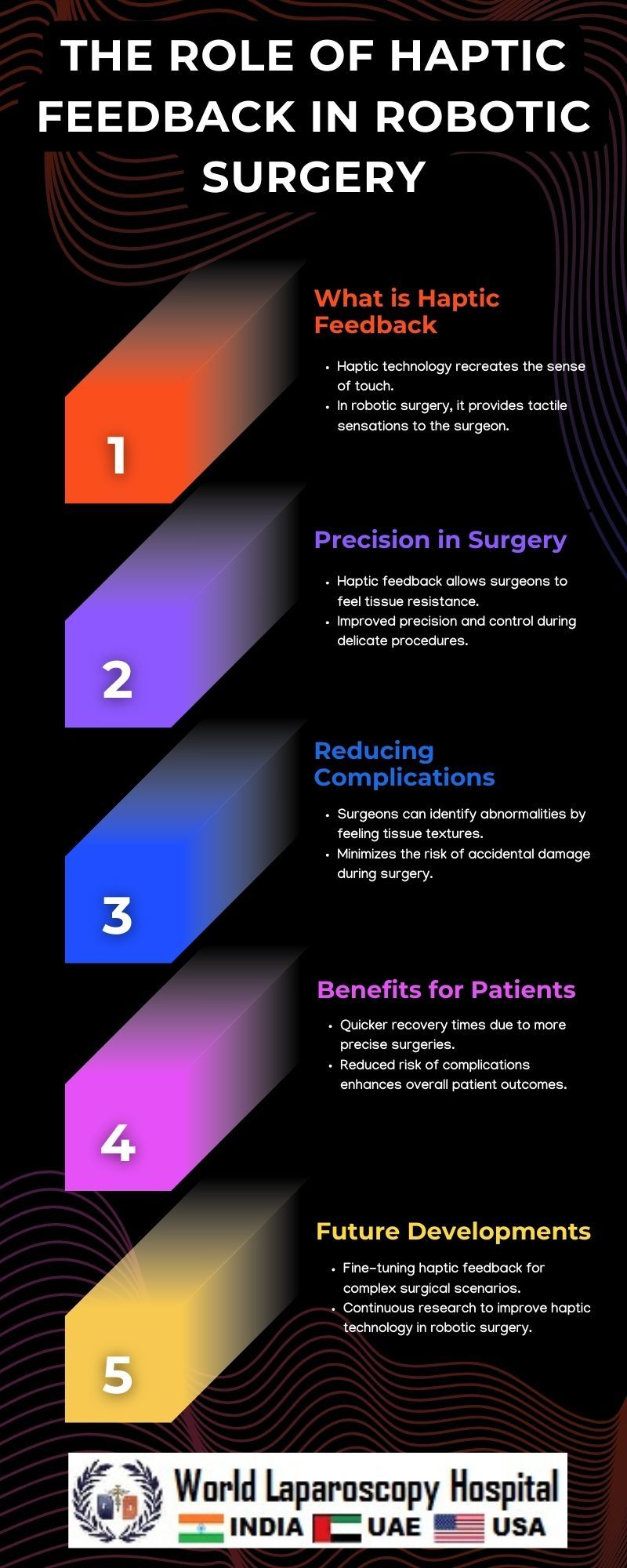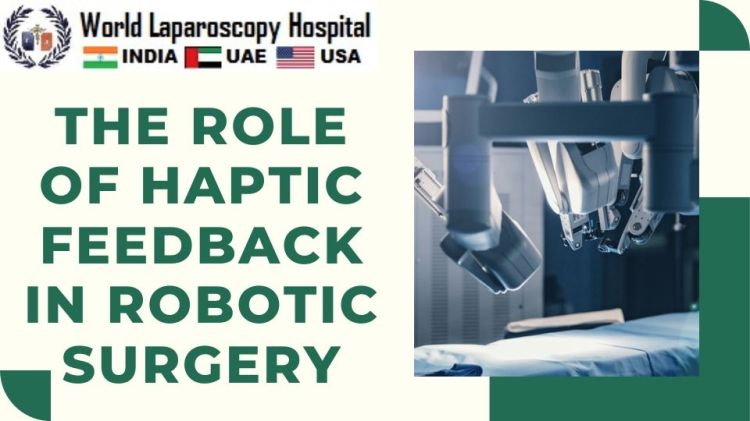The Role of Haptic Feedback in Robotic Surgery
Introduction
Robotic surgery has revolutionized the medical landscape, offering enhanced precision and improved outcomes. One integral component elevating the efficacy of these procedures is haptic feedback. In the intricate realm of surgery, where precision is paramount, haptic feedback plays a pivotal role in replicating the sense of touch for surgeons operating through robotic systems.

Understanding Haptic Feedback
Haptic feedback refers to the sense of touch or tactile feedback provided to users, allowing them to perceive and interact with the virtual or remote environment. In the context of robotic surgery, haptic feedback aims to bridge the gap between the surgeon and the patient, offering a tactile experience akin to traditional open surgery.
The Human Touch in Robotics
Historically, one of the challenges in adopting robotic surgery was the loss of direct physical contact between the surgeon and the patient. Traditional surgeries provided the surgeon with direct haptic feedback, allowing them to feel tissue texture, resistance, and make nuanced adjustments accordingly. Robotic systems, while offering numerous advantages, initially lacked this crucial tactile connection.
The introduction of haptic feedback into robotic surgery addressed this gap, providing a solution to the tactile disconnect. Through advancements in technology, surgeons now have the ability to "feel" the surgical site, recreating a sense of touch through robotic interfaces.
Components of Haptic Feedback in Robotic Surgery
Force Feedback:
Force feedback is fundamental in haptic systems, allowing surgeons to perceive resistance and pressure during robotic procedures. This is achieved through the integration of force sensors in robotic instruments. As the surgeon manipulates the controls, the force feedback system conveys the resistance encountered, enabling a more realistic touch sensation.
Tactile Feedback:
Tactile feedback focuses on recreating the sense of surface texture. Advanced haptic devices use vibration and other mechanisms to simulate the feel of different tissues. This enables surgeons to distinguish between organs, tumors, and other structures, contributing to more precise decision-making during surgery.
Kinesthetic Feedback:
Kinesthetic feedback provides a sense of motion and position. Surgeons receive information about the movement and positioning of robotic instruments, enhancing their spatial awareness. This aspect of haptic feedback is crucial in preventing inadvertent tissue damage and ensuring accurate maneuvering.
Benefits of Haptic Feedback in Robotic Surgery
Enhanced Precision:
Haptic feedback significantly enhances surgical precision by allowing surgeons to feel and respond to tissue variations in real-time. The ability to perceive subtle differences in texture and resistance aids in delicate maneuvers, reducing the risk of damage to surrounding structures.
Reduced Learning Curve:
The incorporation of haptic feedback in robotic surgery systems facilitates a smoother transition for surgeons accustomed to traditional open procedures. The tactile sensation helps bridge the learning gap, making the adoption of robotic technology more intuitive.
Minimized Errors:
The tactile information provided by haptic feedback contributes to a decrease in errors during surgery. Surgeons can identify and correct potential missteps promptly, leading to safer and more successful outcomes for patients.
Remote Surgery:
Haptic feedback enables remote surgery, allowing surgeons to operate on patients located at a different physical location. This has implications for telemedicine, where experts can provide their skills across geographical distances, expanding access to specialized surgical care.
Challenges and Advances in Haptic Feedback Technology
Latency:
One challenge in haptic feedback technology is minimizing latency—the delay between the surgeon's input and the corresponding feedback. High latency can disrupt the surgeon's sense of immediacy, potentially compromising the precision of the procedure. Ongoing research focuses on reducing latency to enhance real-time responsiveness.
Complexity of Sensation:
Replicating the complexity of tactile sensations encountered in open surgery is a formidable task. Haptic feedback systems strive to simulate not only resistance but also the subtle variations in tissue elasticity, viscosity, and other tactile attributes. Advancements in material science and sensor technology contribute to the refinement of these systems.
Interoperability:
The compatibility and interoperability of haptic feedback systems with various robotic platforms and surgical instruments remain a consideration. Standardization efforts aim to ensure seamless integration across different robotic surgical systems, fostering widespread adoption.
Training and Simulation:
Haptic feedback plays a vital role in training surgeons for robotic procedures. Simulation platforms equipped with realistic haptic feedback scenarios allow surgeons to hone their skills in a controlled environment. These training tools contribute to the development of proficient robotic surgeons.
Future Prospects and Implications
The continuous evolution of haptic feedback in robotic surgery holds promising prospects for the field of medicine:
Artificial Intelligence Integration:
The integration of artificial intelligence (AI) with haptic feedback systems is anticipated to further enhance surgical precision. AI algorithms can analyze haptic data in real-time, providing valuable insights and decision support to surgeons during complex procedures.
Expanded Applications:
As haptic feedback technology advances, its application is likely to extend beyond surgery. The incorporation of tactile sensations in other medical fields, such as interventional radiology and endoscopy, could redefine procedural capabilities and improve patient outcomes.
Global Access to Expertise:
Haptic-enabled robotic surgery opens the door to global collaboration in healthcare. Surgeons can remotely assist and mentor colleagues in different parts of the world, contributing to the democratization of surgical expertise and reducing healthcare disparities.
Patient-specific Haptic Profiles:
Tailoring haptic feedback to individual patient characteristics may become a reality. By considering factors such as age, pathology, and anatomical variations, personalized haptic profiles could optimize the surgical experience, catering to the unique needs of each patient.
Conclusion
Haptic feedback stands as a cornerstone in the evolution of robotic surgery, providing surgeons with a tactile bridge to the virtual realm. As technology advances, the integration of haptic feedback continues to refine the precision and capabilities of robotic surgical systems. The symbiotic relationship between surgeons and technology, facilitated by haptic feedback, promises a future where surgical interventions are not only technologically advanced but also deeply informed by the surgeon's sense of touch.
